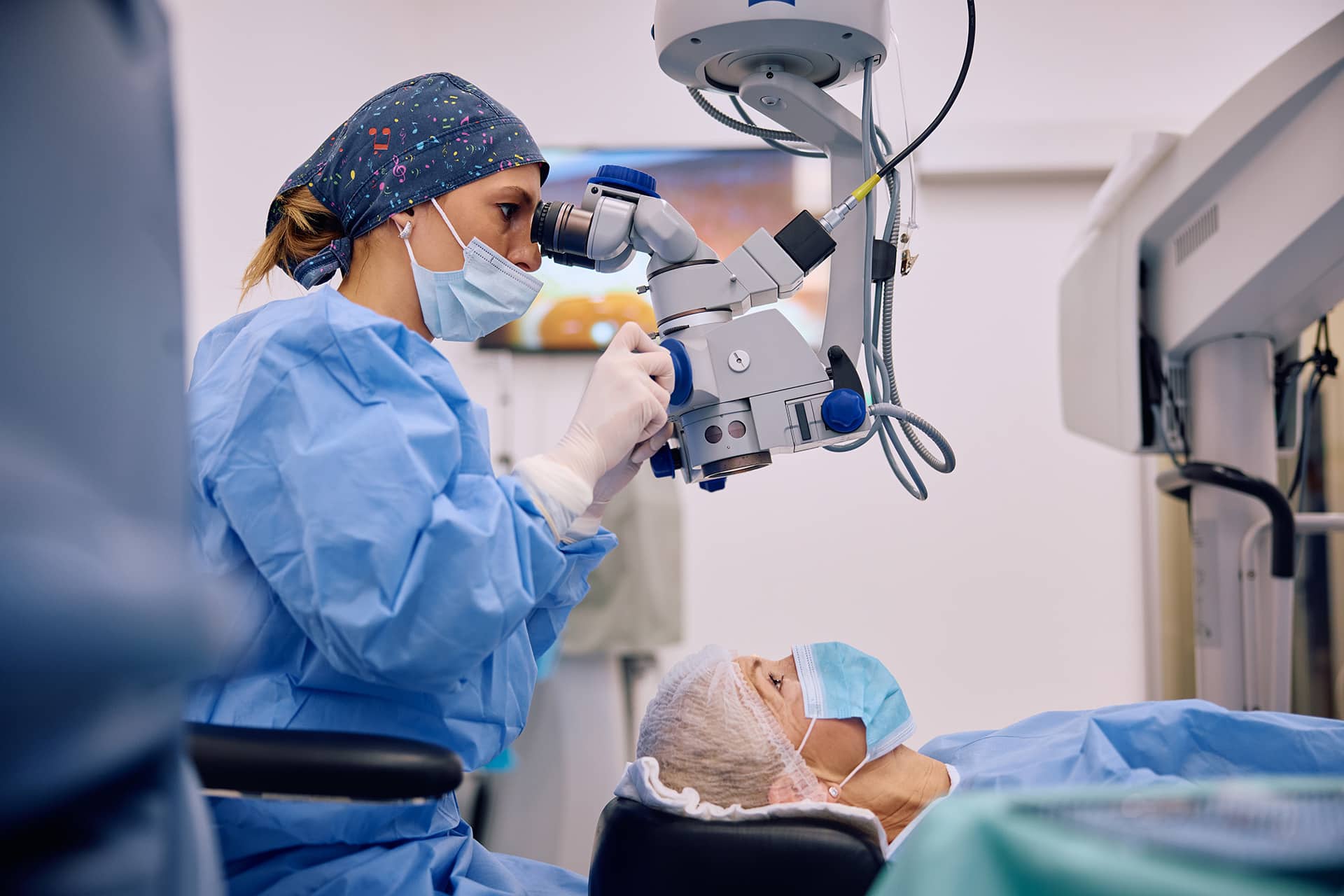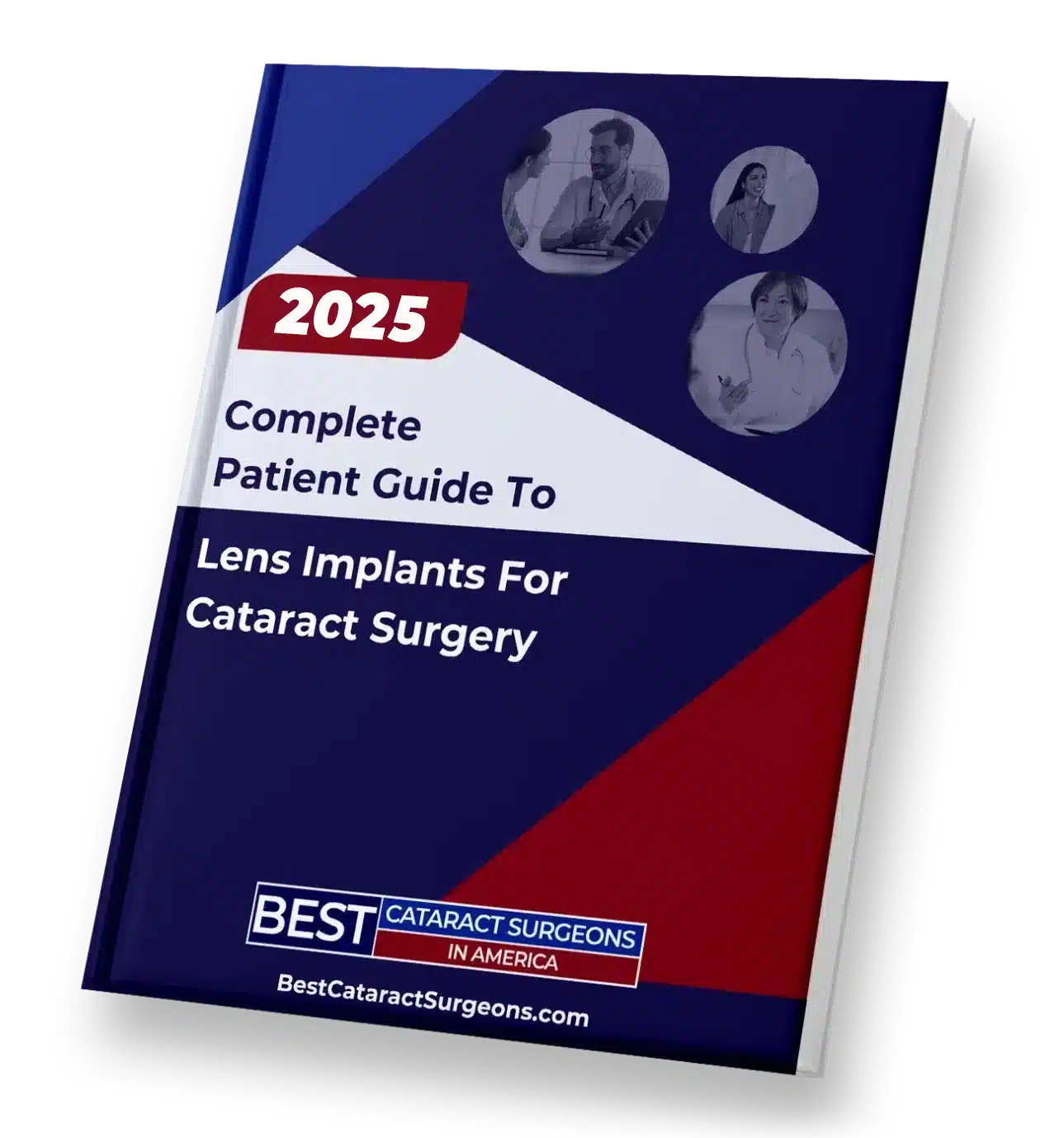If you’ve had cataract surgery in the past, but are noticing vision changes years later, your first thought might be, “Can you have cataract surgery more than once?” The short answer is no – cataracts don’t “grow back” once your clouded lens is replaced with an artificial intraocular lens (IOL). However certain conditions, like secondary cataracts, can mimic recurrence and require follow-up care with a cataract surgeon. At Best Cataract Surgeons, we’re committed to guiding you through these nuances with clarity and compassion; let’s explore what you need to know.
What Are Cataracts and How Does Surgery Work?
Cataracts develop when your eye’s natural lens becomes cloudy, which happens over time as proteins in the lens break down and clump together, causing blurred vision and glare sensitivity. During cataract surgery, this lens is removed and replaced with a clear, artificial IOL that’s tailored to your vision – such as a mono-focal for vision at one distance, a multifocal for clear vision at all distances, or a toric IOL to correct astigmatism. There are 3 key steps you’ll undergo with cataract surgery:
- Pre-op Mapping. Advanced imaging techniques like optical coherence tomography (OCT) and wavefront aberrometry are used to map out your eye’s unique dimensions. This advanced mapping technology allows your surgeon to get a precise picture of your eye, allowing them to personalize your lens selection to ensure you get the best possible outcome for your vision.
- Lens Removal and IOL Implantation. Using either a femtosecond laser or ultrasound (phacoemulsification) waves, the cloudy lens is broken up and the fragmented parts are removed carefully. The artificial intraocular lens (IOL) is then folded and inserted through a small incision so that it rests in the same clear capsule where your natural lens once did. Once in place, it unfolds into the proper position.
- Recovery Milestones. Most patients regain clear vision within days, with full healing in 4-8 weeks.
Modern cataract surgery boasts a 98% success rate, making it one of medicine’s safest and most effective procedures with minimal complications. You can read more about recovery, by checking out our Emerging From Cloudy Vision – Recovery and Healing post.
Can Cataract Surgery Be Performed Twice?
Since the natural lens is permanently removed during surgery, cataracts cannot regrow, and therefore, you can’t have cataract surgery performed more than once. But, there may be rare cases where follow-up procedures are needed:
- The IOL might need to be repositioned if it shifts post-surgery.
- You may choose to upgrade or change your artificial lens to a newer design.
- You may need refractive error corrections to manage residual vision challenges.
So, while a cataract lens can be replaced more than once, it’s not going to be due to a naturally occurring cataract.
Secondary Cataracts (PCO) – Not a Reappearance But a New Issue
So, you’ve had cataract surgery and for a while, everything was crystal-clear. But then, months or even years later, your vision starts to get cloudy again. What’s going on? About 1 in 5 patients experience what’s called a “secondary cataract,” Don’t worry – it’s not actually a new cataract. The medical term is posterior capsule opacification (PCO), and it’s a known after-effect of cataract surgery. It can make your vision blurry or hazy, almost like your cataract is back, but the good news is, that it’s easily treatable.
What Causes Secondary Cataracts?
A secondary cataract occurs when leftover cells from your natural lens start to grow and change after cataract surgery. These cells multiply, move around, and transform, eventually forming a thin, cloudy layer at the back of the capsule that holds your new artificial lens. This cloudy layer can block light from reaching your retina, causing your vision to become blurry or hazy over time.
What’s The Treatment For Secondary Cataracts?
The standard treatment for PCO is a YAG laser capsulotomy, a quick and non-invasive procedure typically performed in your ophthalmologist’s office. During this 5-minute procedure:
- Your eye is numbed with eye drops.
- A special YAG laser creates a small opening in the cloudy posterior capsule.
- This opening allows light to pass through clearly to the retina, restoring your vision.
Most patients experience improved vision within 24 hours of the procedure. The great thing here is that this treatment only needs to be performed once, as a secondary cataract cannot recur after a capsulotomy.
Enjoy Your Life More With a Clearer Vision
Cataract surgery is a lifelong solution to cloudy vision, and while you typically can’t have cataract surgery more than once, secondary issues like PCO, or IOL adjustments may occasionally require follow-up care. At Best Cataract Surgeons, we’re all about providing educational resources on modern cataract surgery and connecting patients to top-rated surgeons equipped for any scenario. Use our Find a Surgeon tool to book a consultation with a cataract specialist near you and start on the clear path to better vision, and brighter life moments.











